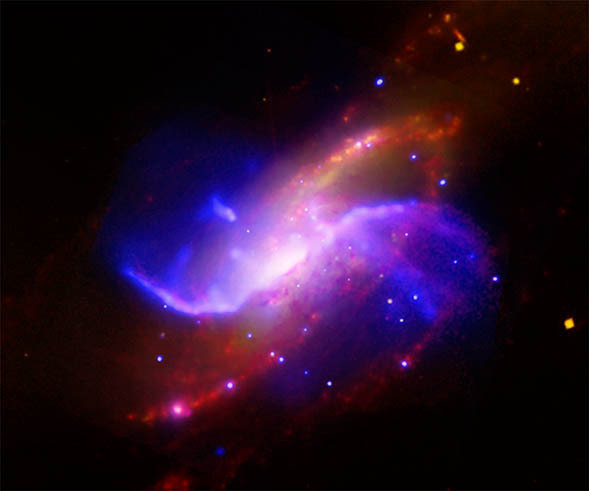The universe constantly surprises us with its intricate beauty and the mysteries hidden within its vastness. One of the most captivating revelations comes from the recent observations made by the James Webb Space Telescope (JWST), which captured a breathtaking image of the spiral galaxy Messier 106. Located 23 million light-years away in the constellation Canes Venatici, this galaxy is a neighbor in cosmic terms, and yet, it harbors secrets that are now being unveiled with unprecedented clarity.
Messier 106 isn’t just any spiral galaxy; it’s home to a particularly active supermassive black hole at its center. Unlike the relatively serene black hole at the heart of our Milky Way, Messier 106’s black hole is voraciously consuming matter, causing it to emit powerful radiation as the material spirals inward. This intense activity at the galaxy’s core creates a dynamic and complex environment, making Messier 106 an invaluable subject of study for astronomers seeking to understand the interplay between black holes and their host galaxies.
What makes this galaxy even more fascinating are its “anomalous” arms—two additional structures that aren’t visible in the normal light spectrum but are revealed through radio and X-ray wavelengths. These arms, composed of hot gas rather than stars, are believed to be the result of outflows from the black hole’s activity.

The JWST’s Near-InfraRed Camera (NIRCam) has provided a detailed and rich view of these features, allowing scientists to map the distribution of stars, dust, and gas in Messier 106 with remarkable precision. The blue regions in the image reflect the stellar distribution, while the orange and red hues indicate varying temperatures of dust, with the teal, green, and yellow tones near the center depicting the gas distributions.
These findings are more than just visually stunning; they are scientifically groundbreaking. The presence of these anomalous arms suggests that supermassive black holes play a far more significant role in galaxy evolution than we previously understood. The energy output from the black hole is not just a localized event; it has far-reaching effects that can alter the galaxy’s structure on a massive scale.



















